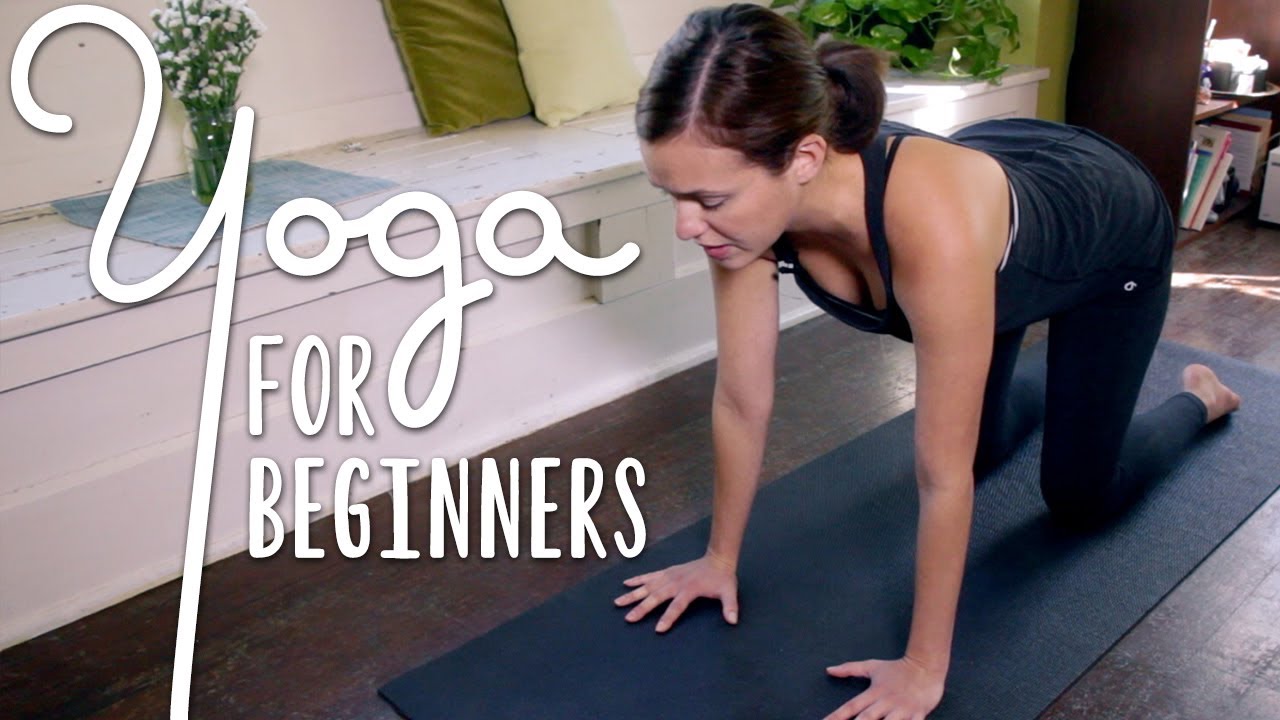
If you suffer from neck pain, yoga can be of great help. Yoga can help with neck pain. You can use triangle, cat/cow and other positions to ease it. These postures are great for strengthening the neck and relieving neck pain. Yoga for neck pain has many benefits. They can be used to treat a variety of conditions and types of pain. Here are the best yoga postures for neck pain. There's always more!
Pose cat/cow
The Cat/Cow position is a variation on the Cow Pose. The aim of this exercise is to stretch the whole spine. When you are in the cat pose, keep your spine straight. The cat pose is good for pregnant women as well as for knee caps. Keep the pose for five to ten seconds. Afterwards, switch to the cow pose to maintain your neck posture and help prevent neck tension. Below are some of the benefits of the Cat/Cow position.
The cat cow pose can be used to warm up for neck and back pain. The cat pose, also known as Marjaryasana-bitilasana, stretches the torso, neck, and lower back. It can also be helpful in relieving neck pain. Although the cat-and-cow pose is difficult for some, it can be modified to a chair yoga posture.
Triangle pose
Trikonasana yoga pose is great for relieving neck and shoulder pain. It can be used to treat many areas of the body simultaneously, including the neck and shoulders. It is beneficial for many conditions as it works multiple parts of our bodies. This pose can provide pain relief for the neck and shoulders, as well as improved posture and flexibility. While this pose can be difficult for those with limited flexibility, it is a great option for those who need help with neck and shoulder pain.

The Extended Triangle Pose is another beneficial yoga pose for reducing back and neck pain. This helps to keep the posterior chain free. This stretch is challenging, but it can provide the most benefits. Start by attempting Mountain Pose, with your feet shoulder width apart. Next, lift your right arm up to the ceiling and extend your left arm outwards. Keep this pose for five seconds. Once you've mastered this yoga pose, you'll feel relief from neck pain and back discomfort.
Plank
For people with neck pain, the Plank is a great exercise. This posture activates all the core muscle simultaneously and requires no extra movement. You can also do it easily, so it is very forgiving. There are many modifications that can be made to the Plank. You can read more about them here. Experts recommend that you hold a plank for between 10 and 30 seconds. The world record for holding a plank for four hours is held by some people. This is the same time it takes to complete a full plank. Therefore, it is recommended that you do multiple sets of shorter durations.
Try a modified plank version if you are having trouble holding the plank. It will be easier on your back. Some people find the plank difficult to do, so they start by holding their hands at shoulder-width distance. If you find it difficult to hold a plank in place for more than a few moments, try placing your hands against a wall or bench. Alternately, if your hands aren't still enough, lower your knees and try a modified plank.
Side plank
Side planks are a basic, effective yoga exercise that improves the health of the neck. It involves strengthening the abdominal muscles and stretching the oblique muscles. In order to do side plank yoga, these muscles must be strong enough to resist gravity. To help them succeed, the glutes, obliques, and lat muscles of the upper body must work together. They should start with 10 reps and increase the pace until they can complete the side plank.
Side planks can be done with either a straight or forearm support position. To reduce stress on your upper body, raise the top leg and bend the bottom knee. The top leg can also be placed on the floor to assist with this exercise. If you have a shoulder or ankle injury, you should avoid performing side planks. You can however adjust them to make it more comfortable and safer.
Pose Chin-toss to the chest

A popular stretch for a stiff neck, the chin-to-chest pose is the yoga equivalent of a neck roll. Sit straight up, relax your shoulders and roll your head over so that your ear touches the shoulder. You can do this as many times as you need to release tension and pain from the neck and shoulders. This pose can be done at home or at work. The key is to hold it for several seconds.
The chin-tochest pose is one the best yoga poses for neck problems. This stretch stretches the backside of the neck and releases tension. To perform this pose, simply interlace your fingers behind your neck, keeping your back straight, and gently exhale. You can hold the pose as long as you like, but make sure to take deep breaths. The ujjayi breathe sounds like a wave crashing onto shore.
Rotating your neck in circles
For neck pain sufferers, rolling your head in a circular motion is a great exercise. Start by placing your head forward. Next, tilt your head to one side. Next, turn your head to the right and slowly roll your head down. Then, return to the original position. To do this stretch correctly, you need to be slow and large and not bend at the neck. Another option is to roll your head sideways in a semicircle. This stretching exercise is great for relieving neck pain.
For the neck roll, you will need a comfortable chair with a high back. Relax your shoulders and place your chin on your chest. Then roll your neck to the point that your ear touches you shoulder. Continue this motion until you reach your desired position. Keep practicing this stretch for several minutes each day. Once you've mastered this pose, you can practice it at home as a daily routine.
FAQ
Why is it important to have a healthy mind?
Work, play, learn, and love. When we talk about mental health, we're talking about our overall wellness. When we refer to mental health, we mean the physical, psychological and spiritual factors that have an impact on us every day. There are many ways you can take care of yourself mentally, emotionally, spiritually and socially. It's not necessary to do all the things at once. You can just start!
The first step towards improving your mental health is understanding where you stand now. Take this quiz and find out how much you're doing to support your mental wellbeing. If your score is low you might need to change your lifestyle.
Suppose you scored high, congratulations! Let's now look at what you can do to maintain or improve your mental health.
-
Get Enough Sleep. A good night's sleep is essential for keeping your brain healthy and sharp. Get at least 7 hours of sleep every night according to the American Academy of Pediatrics.
-
Exercise Regularly. Exercise releases endorphins, which make you happier and less likely stress. Try to do 30 minutes of exercise five days a week.
What is Positive Psychology & Why is It Important?
Positive psychology looks at what makes us feel better. Positive psychology helps individuals feel happier, healthier, wiser and more fulfilled through self-improvement.
There are two kinds of positive psychology: trait and process. Trait positive psychology studies the natural behavior of people. Positive psychology research explains how certain strategies can be used to reach specific goals.
How does one know if he/she has a mental illness?
An individual may be diagnosed if they experience symptoms that disrupt their daily activities. The symptoms of mental illnesses can vary from one person to another. The most common signs are: sadness and anxiety; feeling guilty, hopeless; lonely; depressed; confused; worthless; guilty, suicidal.
If a person meets at least three of the four criteria below, they may be diagnosed with a mental disorder.
-
Disturbed thoughts or feelings
-
Be disturbed
-
Disturbance to functioning
-
A decrease in ability to relate with others
Statistics
- According to the National Alliance of Mental Illness (NAMI), one in five Americans experiences mental health issues which translates to more than 40 million adults a year. (doctorondemand.com)
- More than 40 million adults in the United States have an anxiety disorder, but less than 37% of people seek mental health treatment for their symptoms. (talkspace.com)
- Similarly, for positive mental health, there is likely to be substantial agreement about some typical components (e.g., resilience to stress) 6, and controversy about more atypical components (e.g., career consolidation). (ncbi.nlm.nih.gov)
- Appropriate nutrition and exercise are likely among the most efficacious and cost-effective positive mental health interventions. (ncbi.nlm.nih.gov)
- Similarly, while there is some agreement about the boundaries of typical mental disorders 2, there is likely less agreement about those for positive mental health. (ncbi.nlm.nih.gov)
External Links
How To
How to care for children with autism
Autism spectrum disorder (ASD), is a neurodevelopmental condition that causes impairments in social communication and repetitive behaviours. It affects 1 out of every 50 people worldwide; however, there is no cure for ASD.
The first symptoms usually appear during infancy, around 18 months old. The most common signs include difficulty understanding others' emotions, lack of eye contact, problems with language development, and difficulties in learning new skills. These symptoms can sometimes lead directly to severe behavioral problems such as aggression, anxiety and depression.
This disease is not currently understood, but researchers believe genetics could play a role. ASD could be caused by many factors including infections, stress, anxiety, medications, vaccinations, alcohol consumption, and smoking. Evidence suggests that certain viruses like rubella or measles could increase your risk of developing ASD later.
Early diagnosis and intervention are key to improving outcomes. Many families struggle with their child’s behavior after they turn 18. The severity of symptoms and the level of support required will impact the options for treatment. However, research shows that therapies focused on improving social interaction and reducing problem behaviors can make a difference.